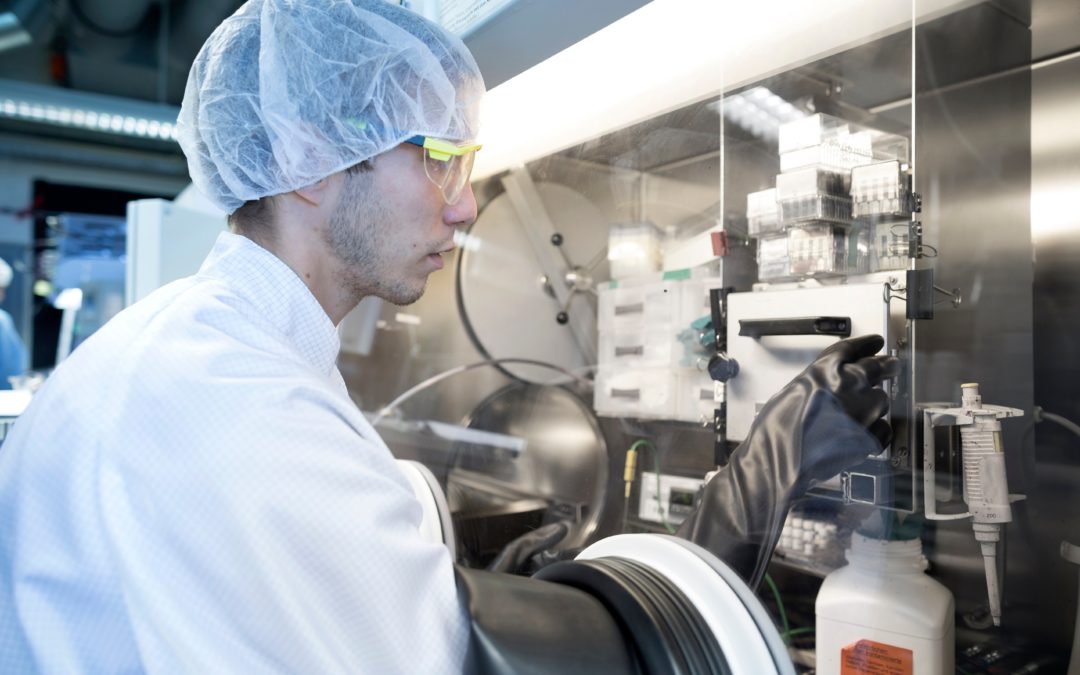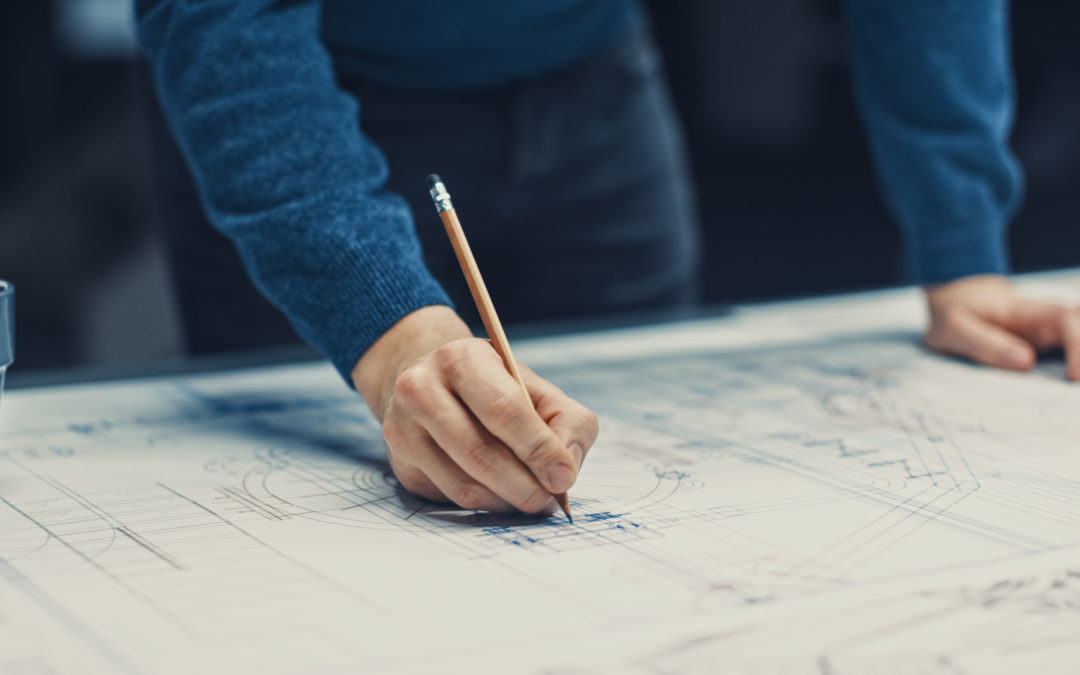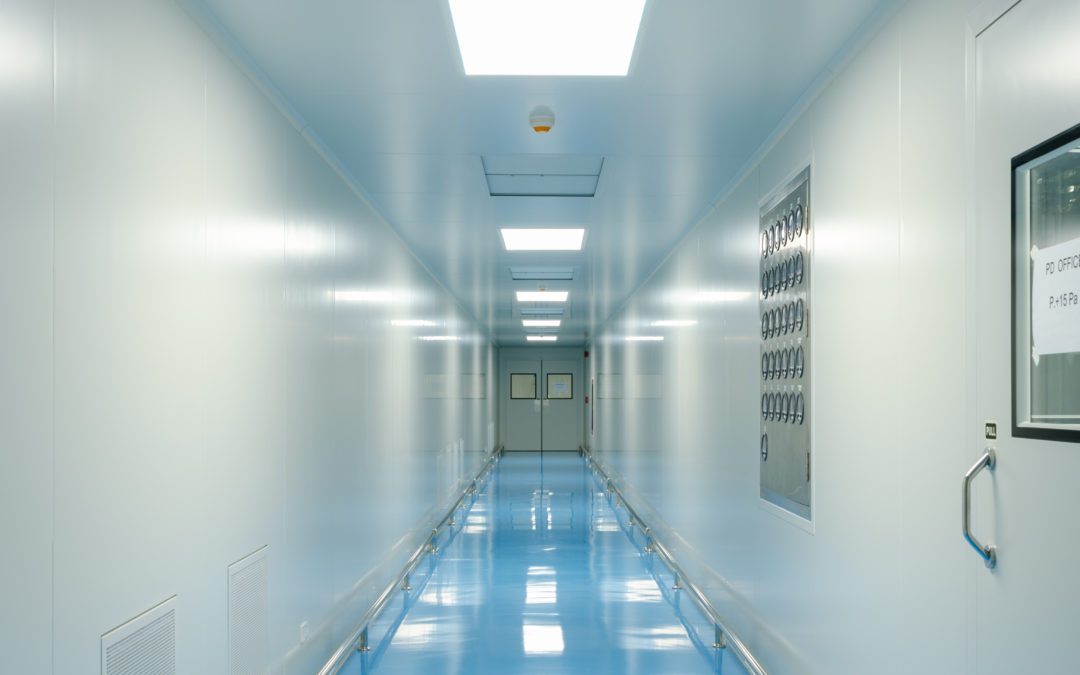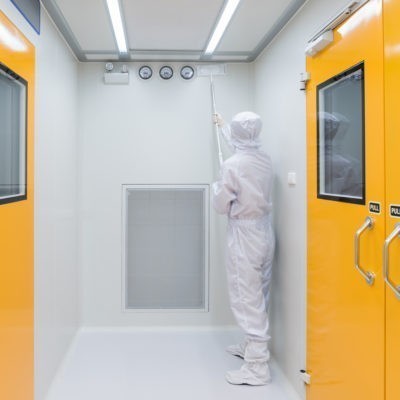Need more details on modular cleanrooms? We’ve got you covered. Below, we’ve answered 10 of the most frequently asked questions we receive about modular cleanrooms here at Angstrom Technology. 1. What Is a Modular Cleanroom?
A modular cleanroom is a cleanroom built of prefabricated components that are quickly and easily assembled to meet your specifications on-site. The prefabricated components are manufactured off-site, then delivered ready for installation, which allows for controlled conditions and improved quality and precision.
Modular cleanrooms are able to meet any cleanliness and classification standards your application requires. They’re also easily reconfigured based on your facility’s changing needs.
2. Do I Need a Modular Cleanroom?
Modular cleanrooms are used in a variety of industries, for a variety of applications. If you need a space that is clean, safe, and virtually contaminant-free in order to successfully execute any of your processes, you’ll probably want to consider investing in one. It will keep your people, products, and property safe, so you can continue to run a profitable business.
To provide some examples, here are a few of the industries that we commonly work with here at Angstrom Technology: aerospace & defense, agriculture, automotive, biotech, environmental testing, medical (hospital, medical device, research, marijuana), microbiology, pharmaceutical manufacturing, plastic injection molding, semiconductor.
3. How Long Does a Modular Cleanroom Take to Design, Build, and Install?
Although the modular cleanroom design, build, and installation process can vary based on the size and complexity of your design, the process is usually very quick — especially when you compare it to that of traditionally built cleanrooms
Most often, framing, drywall, and painting are the worst trades in terms of efficiency. But with prefabricated modular construction systems, those are replaced with a high level of efficiency. In fact, prefabricated panels can result in a 25-75% schedule reduction compared to traditional construction.
At the start of the process, it may take a couple of weeks to consult with a designer about your application’s needs and create a design. After that, you’ll wait for a brief delivery period (6-8 weeks with Angstrom’s industry-setting standard). Once all components are delivered, your modular cleanroom can be installed in just a few weeks, depending on the size.
4. How Much Does a Modular Cleanroom Cost?
The cost of a modular cleanroom is highly competitive to that of a traditionally constructed cleanroom — primarily due to the fast and simple design, build, and installation process. In addition, there’s a tremendous reduction in the costs of waste, unused materials, and lost items that are associated with traditional construction.
That said, modular cleanroom costs can vary tremendously from project to project. In most cases, the cost of a modular cleanroom is based on the following factors:
5. What Are the Benefits of Modular Cleanrooms?
Modular cleanrooms bring the same benefits as traditionally built cleanrooms — and more! In fact, when compared to their traditional counterparts, modular cleanrooms are generally:
- Quicker and easier to install, ensuring that you’re able to resume regular operations in no time.
- More adaptable to your facility’s changing needs, as modular cleanrooms can be constructed and/or reconfigured to fit any space, even within an existing building.
- More affordable, due to prefabricated components and a speedy installation process.
6. What Should I Expect From the Modular Cleanroom Installation Process?
As mentioned in Question #2 above, the modular cleanroom installation process is quick — and, if you’d like to, you can save on labor costs and do it yourself! At Angstrom Technology, we’ll send you a detailed list of installation instructions to follow.
However, if you’re worried about the technical details, we’re also happy to complete the installation process for you. We employ an experienced team of modular cleanroom construction specialists who will install your room for you, leaving you with minimal disruption to your workdays. We’ll get things done and pay close attention to the details so you don’t have to.
7. How Do I Know Which Type of Cleanroom I Need?
There are three common types of cleanrooms: HardWall, SoftWall, and RigidWall. The type you need depends on what you plan to use it for.
- HardWall cleanrooms are made of an aluminum frame and prefabricated solid panels. They suit most applications but are especially helpful for those with stringent cleanroom classification requirements.
- SoftWall cleanrooms are made of an aluminum frame and vinyl curtains around the perimeter. They’re capable of meeting most cleanroom classifications, but not the most stringent — especially when it comes to temperature and humidity control.
- RigidWall cleanrooms are made of an aluminum frame and clear, acrylic panels — giving them the durability and security of a HardWall cleanroom, plus the visibility of a SoftWall cleanroom.
If you’re still unsure which type of cleanroom may best suit your application, it’s best to contact a cleanroom expert. They’ll listen to your needs and propose a solution that is sure to meet them.
8. How Do I Know Which Cleanroom Classification I Need?
Your cleanroom is required to meet a certain ISO classification. ISO classification determines the degree of cleanliness, which is defined by the maximum amount of contamination allowed, by particle count and size. More stringent ISO classifications (i.e. Class 1-5) require higher filtration and air change rates. Less stringent ISO classifications (i.e. Class 6-9) are a little more lenient, working themselves all the way down to normal room air.
For example, pharmaceutical cleanrooms require a stringent ISO classification because it’s a high priority to ensure products are kept safe so that, in turn, their consumers are kept safe. When even the smallest particle could affect the performance of a drug, there is no room for contamination or error.
9. How Does Cleanroom Classification Affect Cost?
Generally, the more stringent your cleanroom classification, the more you’ll pay. This is because more stringent classifications require more filtration — and in order to achieve that, your cleanroom will need to accommodate more fan filter units and additional features like gowning rooms, air showers, etc.
10. Will My Modular Cleanroom Need Any Additional Features?
Some modular cleanrooms just require the most basic components. However, modular cleanrooms that need to meet stringent classification requirements may require additional features and technologies to successfully avoid contamination. Things like airlocks, air showers, pass-through chambers, and gowning rooms are important considerations to keep sensitive applications free of harm.
Have more questions about modular cleanrooms? Give the experts at Angstrom Technology a call! We’d be happy to walk through your specific needs and help to design, build, and install the best modular cleanroom for your facility.







